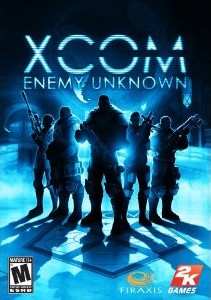XCOM: Enemy Unknown Review
-
Category: ReviewsHits: 22115

Article Index
Page 3 of 5
The tactical battles still make up the meat of XCOM, and this is where the game most significantly deviates from the original, beyond aspects of presentation. The mechanics of combat, while still turn-based, have been completely overhauled and redesigned, generally for the simpler. This isn't to say that combat is simplistic per se, or devoid of tactical considerations, but some of the nuances in the original mechanics have been removed to make the game more accessible, which is something older fans might not appreciate. The first way this has been done is through the importance of cover. While cover was obviously an important part of the original game, in XCOM it is a formalized mechanic - high and low cover give your soldiers different levels of protection when pressed up against it, elevation confers accuracy bonuses or penalties, and it can be destroyed by gunfire or explosions. If you have ever played Relic Entertainment's Company of Heroes or Dawn of War II, you have an idea of what to expect.
The cover mechanic works well. Much like the original game, destructible terrain means that the battlefield will change over time and you can't ever stay in one place for too long. Your soldiers are basically sitting ducks without cover, which stresses the importance of caution, and also makes flanking all the more important to think about. It is also very clear that the cover system was made this way to help take some of the guesswork out of gameplay. If your soldiers are marked as being in cover, then they get their defense bonus. If they are flanked, the game will tell you by putting an icon over them. Although this reassurance might sound like a good thing, it can also feel limiting because you are so dependent on it. The question "in cover or not" also matters far more than, say, distance, such that you can have a far better chance of hitting an enemy that is just barely in range, than one who is standing two tiles away but is behind cover. It's a little more gamey and artificial than the mechanics in the original game.
The second major change to combat is that time units have been replaced with a much simpler "two moves per turn" system. This is one of the less successful elements in the game, and at times borders on oversimplification to the detriment of gameplay. For example, different soldiers have different movement speeds, which translates into how far they can move in a single turn. However, as you can only make two moves per turn, this makes it difficult to move your soldiers carefully. You can't creep along one tile at a time, slowly revealing the battle map; without precise movement available, you are forced into a sort of "all or nothing" scenario every turn, and as a result your soldiers will often take unintended routes to their destinations, alerting more enemies in the process.
Using items or weapons, in most cases, also uses up all your current unit's moves, which means that you will always need to move before shooting, or reloading, or using a medkit. My guess is that this was done to avoid players abusing hit-and-run tactics, but overall it decreases the number of options you have available. Specific skills that your troops can unlock will help mitigate these limitations, but it kind of comes across as gaining access to options you should already have by default. Time units are generally more convincing as a simulation element, and give many more options in combat, so it's sad to see them go.


